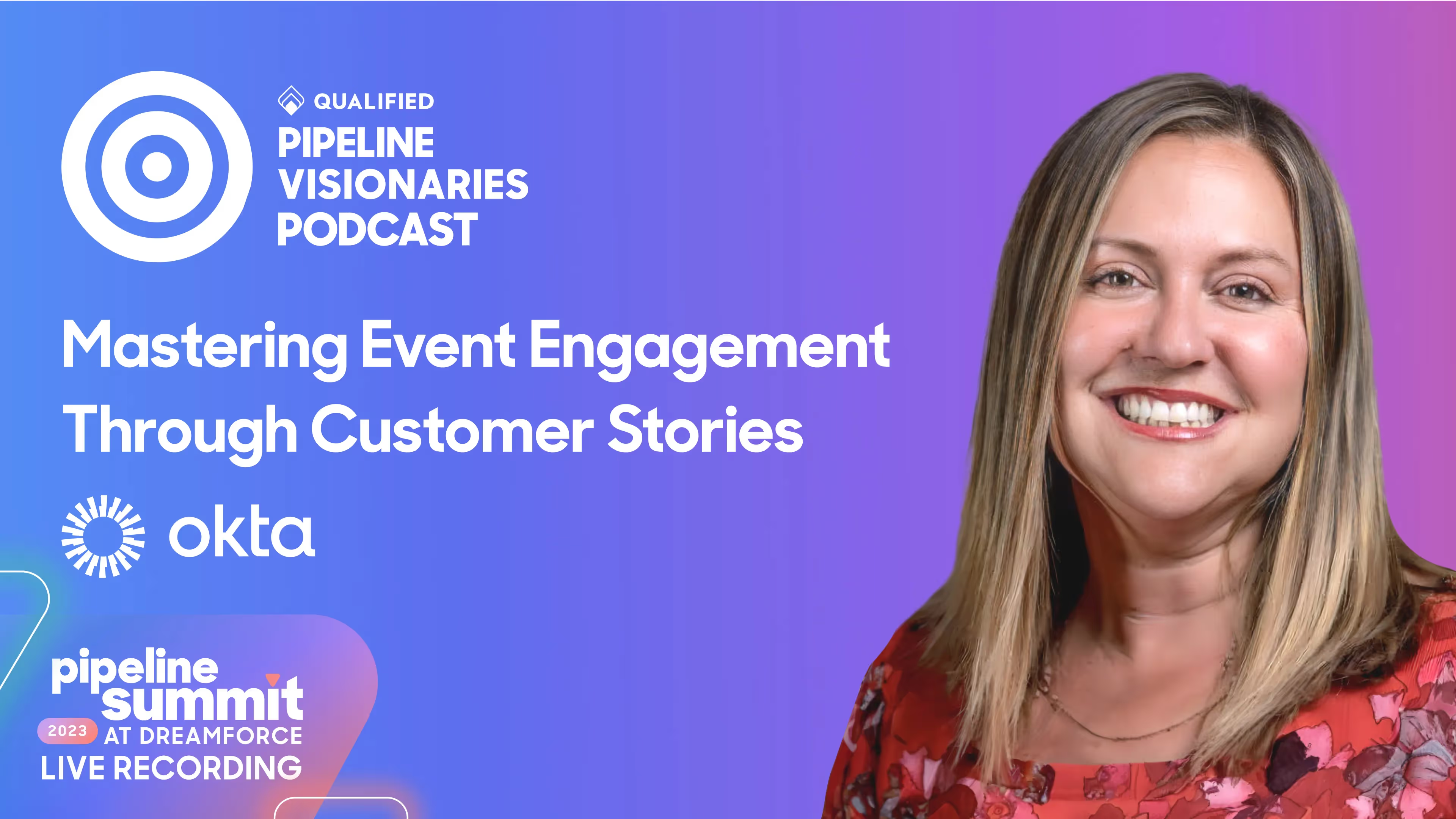Mastering Event Engagement Through Customer Stories
Karin Flores, VP of Strategic Events at Okta, utilizes customer stories and why they are always the greatest asset in any marketing campaign.




Karin Flores, VP of Strategic Events at Okta, utilizes customer stories and why they are always the greatest asset in any marketing campaign.

This episode features an interview with Karin Flores, VP of Strategic Events at Okta, a software development company enabling organizations to securely connect the right people to the right technologies at the right time.
In this episode, Karin talks about how Okta is augmenting its portfolio to meet the needs of their customers, how customer stories are always the greatest asset in any marketing campaign, and what it means for brand personas to be more connected than ever before.
Key Takeaways:
Stay up to date with weekly drops of fresh B2B marketing and sales content.
Karin Flores, VP of Strategic Events at Okta, utilizes customer stories and why they are always the greatest asset in any marketing campaign.


This episode features an interview with Karin Flores, VP of Strategic Events at Okta, a software development company enabling organizations to securely connect the right people to the right technologies at the right time.
In this episode, Karin talks about how Okta is augmenting its portfolio to meet the needs of their customers, how customer stories are always the greatest asset in any marketing campaign, and what it means for brand personas to be more connected than ever before.
Key Takeaways:
Stay up to date with weekly drops of fresh B2B marketing and sales content.
Karin Flores, VP of Strategic Events at Okta, utilizes customer stories and why they are always the greatest asset in any marketing campaign.


This episode features an interview with Karin Flores, VP of Strategic Events at Okta, a software development company enabling organizations to securely connect the right people to the right technologies at the right time.
In this episode, Karin talks about how Okta is augmenting its portfolio to meet the needs of their customers, how customer stories are always the greatest asset in any marketing campaign, and what it means for brand personas to be more connected than ever before.
Key Takeaways:
Stay up to date with weekly drops of fresh B2B marketing and sales content.
Karin Flores, VP of Strategic Events at Okta, utilizes customer stories and why they are always the greatest asset in any marketing campaign.



This episode features an interview with Karin Flores, VP of Strategic Events at Okta, a software development company enabling organizations to securely connect the right people to the right technologies at the right time.
In this episode, Karin talks about how Okta is augmenting its portfolio to meet the needs of their customers, how customer stories are always the greatest asset in any marketing campaign, and what it means for brand personas to be more connected than ever before.
Key Takeaways:
Discover how we can help you convert more prospects into pipeline–right from your website.